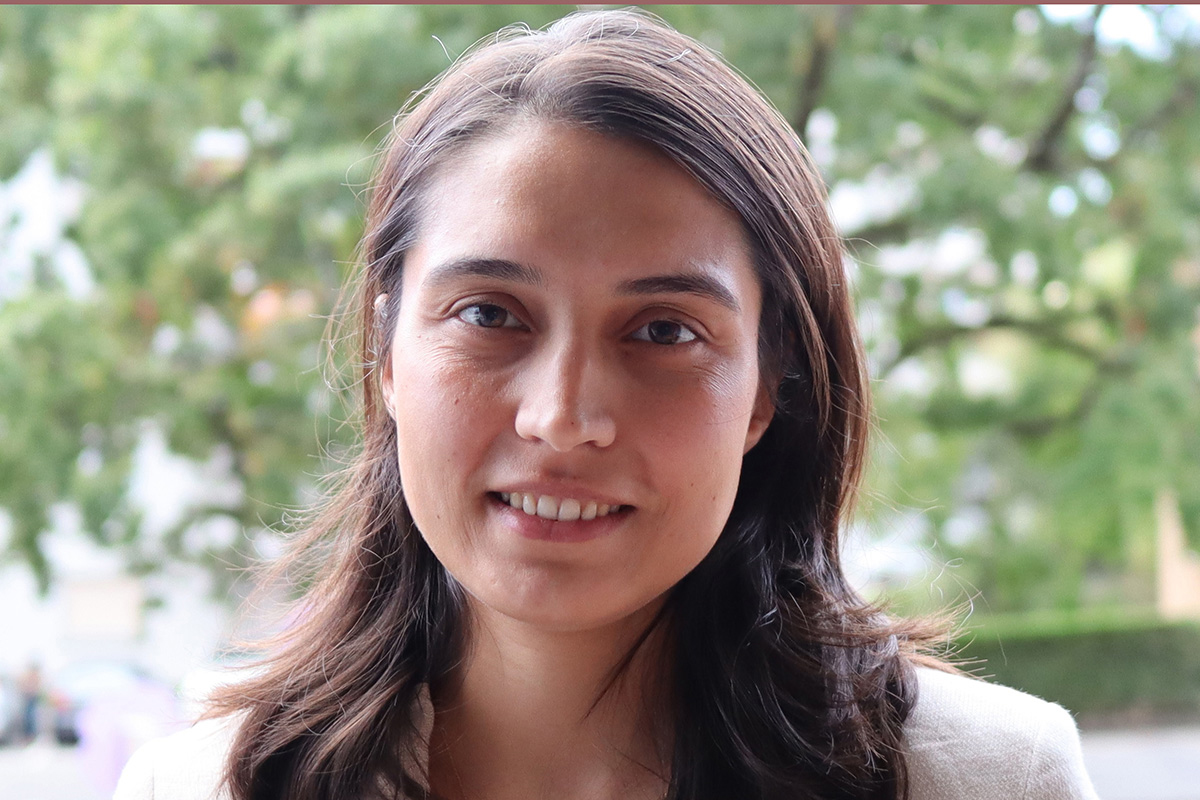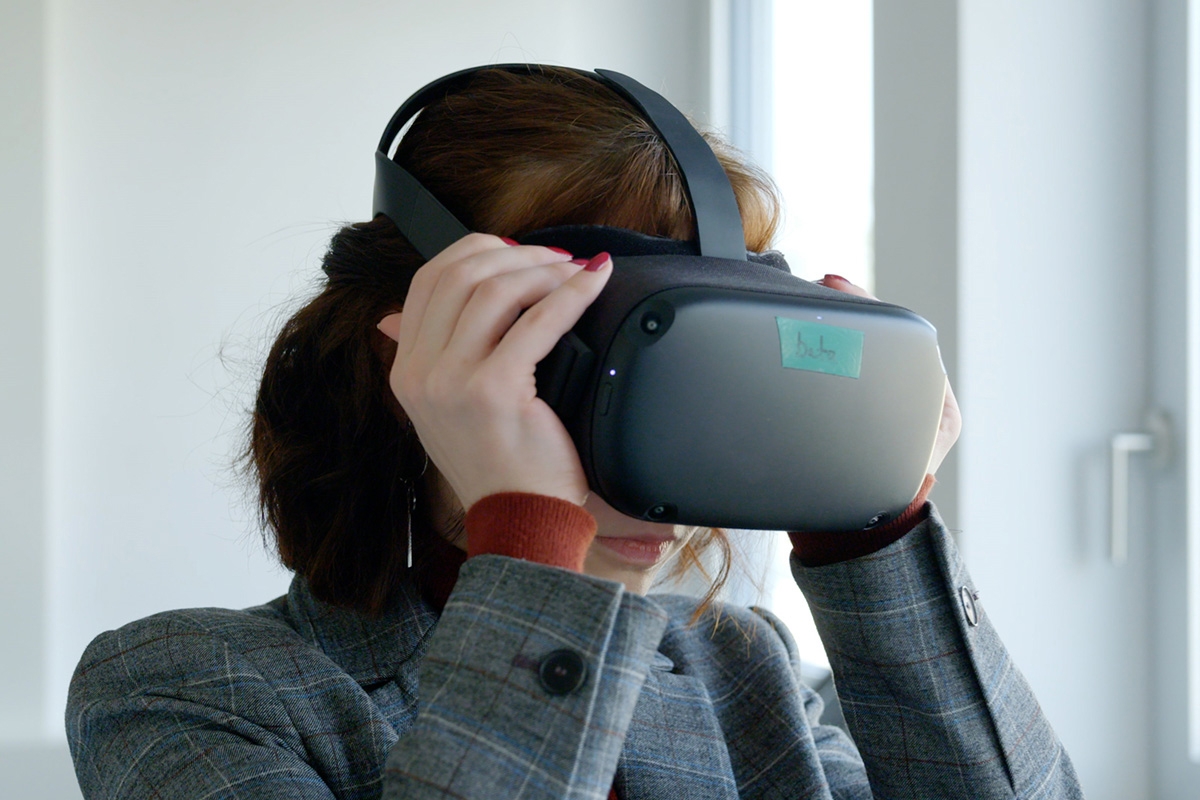Preventing millions of people from going blind
PeriVision, a University of Bern spin-off, is awarded 1.5 million Euros by the European program EIT Health to market its AI-based portable testing device that wants to revolutionize glaucoma care. Co-founder Dr. Serife Kucur, explains how their solution will improve diagnosis and treatment via VR glasses.

Serife Kucur: PeriVision can solve the acute and growing need for glaucoma care. Glaucoma is a chronic eye disease and the leading cause of blindness worldwide, affecting mostly elderly people. Today 80 million people have glaucoma but the number is expected to reach 112 million, because populations are aging rapidly. It is a chronic disease and patients’ eyes must be checked regularly to prevent irreversible sight-loss. However, this creates major demands on healthcare, and sufferers have lost vision simply because they could not be seen in time by an eye doctor. PeriVision can play a part in avoiding this type of preventable blindness.
Visual field testing aka perimetry is an important method used to diagnose and monitor glaucoma patients. Testing takes six to eight minutes per eye, during which the patient clicks a button in response to light flashes on a screen. It is a performance test, that needs high concentration, which can be tiring, frustrating, and intimidating especially for elderly patients. And not only is it a poor patient experience, moreover anxious and exhausted patients produce inaccurate results.
In fact, eye care practitioners have dubbed it “Ophthalmology’s most hated exam”. Furthermore, current perimetry devices are bulky, stationary, and expensive. They need a dedicated dark room, and a specialist nurse to run the tests, severely restricting perimetry services and giving no room to scale them to address the growing number of glaucoma patients. We urgently need more affordable and agile solutions to meet this big unmet clinical need.
What exactly is the proposed solution to this medical and societal challenge?PeriVision offers a mobile, affordable, and faster alternative to the current bulky, expensive, and slow perimetry setups. Coupling a virtual reality goggle with our patented AI technology, our perimetry device is low-cost and portable, allowing other healthcare professionals like GPs, opticians, diabetic nurses, and pharmacies – and even patients to perform the test with ease. This means our solution can bring greater perimetry capacity to developed and developing healthcare systems.
The PeriVision team includes Patrick Kessel, Entrepreneur-in-residence at ARTORG Center, Prof. Dr. Raphael Sznitman, Director of the ARTORG Center and the Artificial Intelligence in Medical Imaging group, Prof. Dr. Marion Munk, Director of the Bern Reading Center at the Bern University Hospital/Inselspital, Eye Care Hospital/Augenklinik as a medical advisor and me as the scientific co-founder. Together we have strong clinical, technological, and translational expertise to develop a solution to address the limitations of glaucoma care and change the lives of millions of people!

PeriVision is the result of my PhD project at ARTORG Center. Vital for its success was and is my close interaction with eye care specialists at the Inselspital. The scientific ophthalmology research at the ARTORG is fully integrated with the clinical care and workflow at the Ophthalmology, Inselspital. Ophthalmologists and neuro-ophthalmologists work side-by-side with us to address their clinical challenges in an efficient way. This translational work includes engineers, clinicians, and industry to bring impactful healthcare solutions into the clinic and the market place to benefit patients.
In 2018 I was awarded an SNSF/Innosuisse Bridge Proof-Of-Concept Fellowship to transfer our research from an academic level into startup phase to form a company, find partners and investors and launch a product. Towards this goal, mentoring programs offered by the University of Bern were very helpful to gain an understanding of the business and regulatory aspects and refine our strategy for successful market entry. So, the Uni Bern ”eco-system” had plenty of resources to address the missing pieces in this transition period.
What appealed to you about entrepreneurship?I very much like the idea of creating something from scratch that in the end touches peoples’ lives. It is not easy and involves a lot of juggling when raising a family at the same time. But the goal of helping elderly people have a positive experience of perimetry and even save one person’s eyesight gives me the motivation to overcome any setbacks along the way.
What was the path from the idea of the company to the foundation of the spin-off?This technology is the result of six years of research and development at the ARTORG Center and the Augenklinik of the Inselspital. From the idea phase to the current stage, we validated our prototype in clinical studies, developed a suitable business model, determined the regulatory framework and investigated the potential market.
For the last two and half years, we conducted two clinical studies with more than 200 patients at the Inselspital and interviewed ophthalmologists to understand their needs better. We worked with regulatory experts to identify the regulatory and clinical roadmap for our product.
With all this preparation in place, we now plan to incorporate within six months and conduct a large-scale international multi-center study as well as pilot trials with private eye clinics. We already gained traction through several startup and innovation competitions, including BBCW and Ypsomed Innovation Prize. We won Venture Kick Stage I financial and entrepreneurial support and joined the Swissnex Boston US business validation program. Finally, today is a big success with getting the coveted EIT Health Wild Card support which we will use to finalize our product, get the CE and FDA approvals and prepare our medical device for market launch.
What is your vision?PeriVision wants to disrupt the current glaucoma care pathway with our mobile, faster, and affordable solution. Our vision is to stop preventable blindness for millions of people who suffer from glaucoma worldwide. PeriVision will provide greater equality to healthcare access, increase quality of life for those affected, and reduce treatment and care costs for the benefit of society.
Which advice would you give to students who are considering taking the step into self-employment?First of all, congratulations for daring to leave the comfort zone! I think the most important thing to keep in mind is that this is not going to be a smooth path and you have to accept the challenge from the beginning. Although it is called “self-employment”, a start-up is team-work and my advice would be to find complementary skills and bring in forces from different perspectives and backgrounds. Of course, it then becomes very important to stay humble and be open to listen to different ideas and feedback. This is how you can personally grow along the way, which would be one of the best outcomes of such a venture.
Which advice would you give your student self from todays’ perspective?Prioritize well and see the big picture. And always be optimistic!
About Serife Kucur
Serife Seda Kucur obtained her BSc degree in Telecommunications Engineering in Turkey, and her MSc degree in Communication Systems at EPFL in Lausanne. Before starting her PhD studies, she gained researcher/work experience at the Scientific and Technological Research Council of Turkey TUBITAK and at the IDIAP Research Institute in Switzerland. She joined the Artificial Intelligence in Medical Imaging group at the ARTORG Center for her PhD studies in 2015 where she developed machine learning techniques to improve visual field testing for glaucoma care. In 2018, she was awarded a SNSF/Innosuisse Bridge Proof-of-Concept Fellowship to transfer her research on AI-based, mobile and fast visual field testing into a device for clinical use. Since then, she serves as the CTO of a new University of Bern spin-off, PeriVision where she is focused on both product and business development to commercialize her patent-pending and clinically-validated technology.
About the author
Dr. Monika Kugemann is Communications Lead at the Center for Artificial Intelligence CAIM and the ARTORG Center for Biomedical Engineering Research, University of Bern.